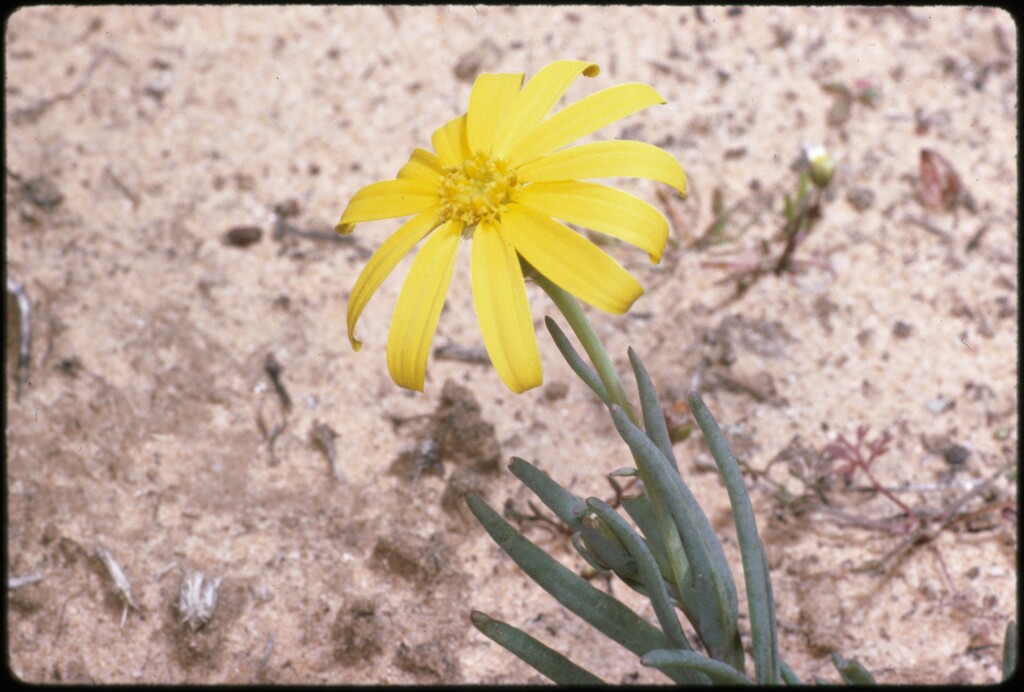Senecio gregorii
F.Muell.Erect, fleshy, simple or few-branched, glabrous, usually glaucous annual, 15–40 cm high. Leaves sessile, without auricles, linear or very narrowly lanceolate, 3–10 cm long, 2–6 mm wide, entire. Inflorescence of 1–few terminal, long-pedunculate capitula; peduncles hollow, expanded somewhat just below capitula; capitula radiate; involucre cylindric, 5–15 mm long, bracteoles absent; bracts 10–13, but fused for most of their length, splitting to the base only as the fruiting head matures; bracteoles absent. Ray florets 7–11(–14), bright yellow, ligules c. 8–20 mm long; disc florets 25–55, yellow. Cypselas fusiform, 4.5–8.5 mm long, those of ray florets usually smaller than those of disc florets, or sometimes sterile, all white-villous; pappus of rather coarse white hairs 12–18 mm long, persistent. Flowers Aug.–Oct.
LoM, MuM. All mainland states. In Victoria confined to mallee and Callitris woodlands of the far north-west and uncommon, but locally prolific following favourable rains (particularly following fires).
Walsh, N.G. (1999). Senecio. In: Walsh, N.G.; Entwisle, T.J., Flora of Victoria Vol. 4, Cornaceae to Asteraceae, pp. 941–965. Inkata Press, Melbourne.
 Spinning
Spinning



